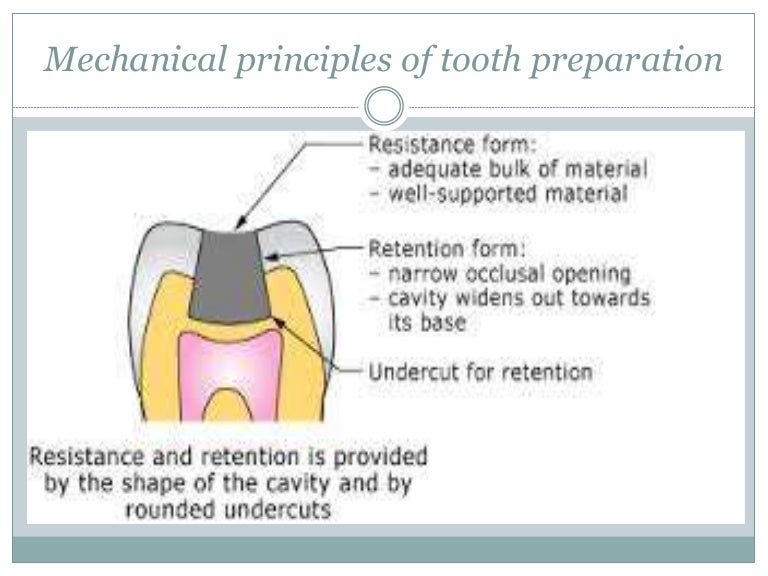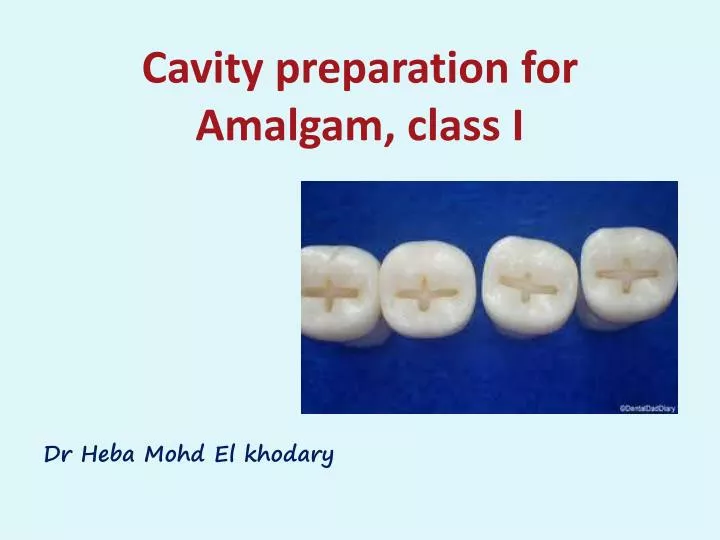- Slot Prep Restorations Home/Blog / Slot Prep Restorations. November 17, 2020 (Afternoon tea pics 1416.2: Voco Grandio SO). See all Dental Services.
- Pre-clinical dentistry - Dr. Arwa Al-Musa 247,811 views 8:38 How to motivate yourself to change your behavior Tali Sharot TEDxCambridge - Duration: 16:49.
- A 'slot-prep' restoration does not have the strength to withstand the forces placed on a primary molar. Secondly, this case clearly shows what the repercussion is of inadequate caries removal.


Frequently, I see patients who have interproximal caries, but no occlusal caries on the same teeth. I use the Kavo DIAGNOdent, and I feel relatively confident that only interproximal carious lesions are present. Mont parnes regency casino of athens wv.
In this monthly feature, Dr. Gordon Christensen addresses the most frequently asked questions from Dental Economics readers. If you would like to submit a question to Dr. Casino rescue squad movie. Christensen, please send an email to info@pccdental.com.

Question..
Frequently, I see patients who have interproximal caries, but no occlusal caries on the same teeth. I use the Kavo DIAGNOdent, and I feel relatively confident that only interproximal carious lesions are present. I thought the G.V. Black Classification I meant that Class I was the most commonly occurring lesion. Why am I seeing interproximal caries and no occlusal caries, and what type of restoration is indicated for these lesions? Should I be placing typical Class II restorations in these situations?
Slots: They are prepared in dentin to increase the surface area of the preparation and have more convergent walls. These are 1 – 1.5mm deep box type preparations and can be given 9in occlusal wall or gingival wall or both. Contact a dentist. Contact a local dentist to see if they might be open to you shadowing, or even just asking them some questions about the profession. As a next step, consider shadowing a dentist. Shadowing, or observing the practice of dentistry, is a great way to learn about the practical aspects of being a dentist.
Answer from Dr. Christensen..
You are not the only person seeing the clinical situation you described, and yes, G.V. Black did number the types of dental caries as Class I through Class IV, based on the most commonly occurring to least commonly occurring lesions. But caries activity has changed since G.V. Black's classification system was accepted. Animal and human research has shown that due to the widespread use of many methods to carry fluoride to teeth, occlusal surfaces have fewer grooves, and carious lesions are observed less frequently than without the use of fluoride. It is a fact that many posterior teeth have interproximal caries and no occlusal caries. I assume that the occlusal surfaces have some immunity to caries due to their fluoride content and relatively natural self-cleansing characteristics because of chewing food. On the other hand, the interproximal surfaces in the same mouth may have significant plaque and debris which probably overwhelms the fluoride resistance on the interproximal surfaces. This condition often is observed in teenagers as they go through their normal maturation, eating significant quantities of junk food and often resisting instruction from authority figures such as dentists or parents.
Slot Prep Dental
What should be done with these carious lesions? Proximal slot preparations are indicated. These preparations may be approached from the facial surface of the tooth if the tooth is fully erupted and has a long clinical crown. A challenge with the facial approach is the necessity of placing a metal matrix strip between the teeth as the facial slot preparation is made to avoid nicking the adjacent tooth. If the gingiva is not receded and the clinical crown is short, I suggest an occlusal approach for the slot preparation. This preparation looks like the proximal slot of a Class II tooth preparation without an occlusal cut.
The profession is using bonding agents routinely; however, they have questionable resistance to debonding. In these small preparations, I still suggest some mechanical retention should be placed with a small round bur (1/2-inch or 1/4-inch size). The preparations can be easily restored with resin-based composite. The result is a MO, DO, FM, or FD restoration, with the patient fee the same as a more aggressively cut Class II. If I had such a carious lesion in my own mouth, I would prefer to have the slot restoration instead of a typical Class II restoration. I also would prefer a facial approach instead of an occlusal approach, if possible, since the occlusal restoration is subjected to more wear than the proximal restoration.

Frequently, I see patients who have interproximal caries, but no occlusal caries on the same teeth. I use the Kavo DIAGNOdent, and I feel relatively confident that only interproximal carious lesions are present. Mont parnes regency casino of athens wv.
In this monthly feature, Dr. Gordon Christensen addresses the most frequently asked questions from Dental Economics readers. If you would like to submit a question to Dr. Casino rescue squad movie. Christensen, please send an email to info@pccdental.com.
Question..
Frequently, I see patients who have interproximal caries, but no occlusal caries on the same teeth. I use the Kavo DIAGNOdent, and I feel relatively confident that only interproximal carious lesions are present. I thought the G.V. Black Classification I meant that Class I was the most commonly occurring lesion. Why am I seeing interproximal caries and no occlusal caries, and what type of restoration is indicated for these lesions? Should I be placing typical Class II restorations in these situations?
Slots: They are prepared in dentin to increase the surface area of the preparation and have more convergent walls. These are 1 – 1.5mm deep box type preparations and can be given 9in occlusal wall or gingival wall or both. Contact a dentist. Contact a local dentist to see if they might be open to you shadowing, or even just asking them some questions about the profession. As a next step, consider shadowing a dentist. Shadowing, or observing the practice of dentistry, is a great way to learn about the practical aspects of being a dentist.
Answer from Dr. Christensen..
You are not the only person seeing the clinical situation you described, and yes, G.V. Black did number the types of dental caries as Class I through Class IV, based on the most commonly occurring to least commonly occurring lesions. But caries activity has changed since G.V. Black's classification system was accepted. Animal and human research has shown that due to the widespread use of many methods to carry fluoride to teeth, occlusal surfaces have fewer grooves, and carious lesions are observed less frequently than without the use of fluoride. It is a fact that many posterior teeth have interproximal caries and no occlusal caries. I assume that the occlusal surfaces have some immunity to caries due to their fluoride content and relatively natural self-cleansing characteristics because of chewing food. On the other hand, the interproximal surfaces in the same mouth may have significant plaque and debris which probably overwhelms the fluoride resistance on the interproximal surfaces. This condition often is observed in teenagers as they go through their normal maturation, eating significant quantities of junk food and often resisting instruction from authority figures such as dentists or parents.
Slot Prep Dental
What should be done with these carious lesions? Proximal slot preparations are indicated. These preparations may be approached from the facial surface of the tooth if the tooth is fully erupted and has a long clinical crown. A challenge with the facial approach is the necessity of placing a metal matrix strip between the teeth as the facial slot preparation is made to avoid nicking the adjacent tooth. If the gingiva is not receded and the clinical crown is short, I suggest an occlusal approach for the slot preparation. This preparation looks like the proximal slot of a Class II tooth preparation without an occlusal cut.
The profession is using bonding agents routinely; however, they have questionable resistance to debonding. In these small preparations, I still suggest some mechanical retention should be placed with a small round bur (1/2-inch or 1/4-inch size). The preparations can be easily restored with resin-based composite. The result is a MO, DO, FM, or FD restoration, with the patient fee the same as a more aggressively cut Class II. If I had such a carious lesion in my own mouth, I would prefer to have the slot restoration instead of a typical Class II restoration. I also would prefer a facial approach instead of an occlusal approach, if possible, since the occlusal restoration is subjected to more wear than the proximal restoration.
Question..
Slot Prep Dental
In view of the limited ability of either conventional or digital dental radiographs to demonstrate caries, as reported by you and others and recognized by my own personal observations, and the unacceptability of direct vision to detect dental caries, how should devices such as the Kavo DIAGNOdent be used in typical practice?
Answer from Dr. Christensen..
The Kavo DIAGNOdent has proven itself to be a useful instrument to assist in the detection of Class I and Class V dental caries. However, using it can be time-consuming, and interpretation of results requires clinical judgment. I suggest the following staff-oriented technique. Designate a hygienist or assistant to learn about and use the DIAGNOdent. Have an in-service training session on its use. Assign caries-suspect patients to the designated dental hygienist or assistant, and have that person accomplish diagnostic data collection with the DIAGNOdent. Remember the phrase, 'diagnostic data collection.' Assistants and hygienists can collect data for later interpretation by dentists, but by law, in most states, they cannot do diagnosis or treatment-planning. I suggest the following staff procedure, which is a valuable service for the patient and a source of income for the practice.
1) Clean the suspect teeth with an air slurry polisher, such as a Prophy Jet, Cavi Jet, or many other similar devices. The DIAGNOdent will not provide an accurate reading in the presence of calculus or stain.
2) Wash and dry the teeth.
3) Use the DIAGNOdent on all of the questionable occlusal or Class V surfaces.
4) Record this information in the patient's record.
5) After these procedures have been performed by a staff person, the dentist should observe the data and make a decision about whether or not to restore the teeth, based on the numerical values obtained from the DIAGNOdent, the age of the patient, the apparent degree of caries activity, the patient's health status, and other potential caries stimulating factors.
Slot Preparation Dentistry
The DIAGNOdent is useful if used correctly and with good clinical judgment. It has made dentists aware of the inability of dental radiographs of any type to accurately indicate the presence of dental caries, especially initial caries.
Slot Prep In Dentistry
Dave welch poker. One of our newest videos, V1502, 'The New Generation of Tooth-Colored Inlays and Onlays,' shows conservative restoration of teeth, and will motivate dentists to provide more tooth-colored inlays and onlays. There are several excellent ceramic and polymer restorative materials available for this service. Additionally, two other videos relate directly to the questions asked above: V1180, 'Diagnostic Data Collection by Auxiliaries,' and C501A ,'DiagnoDent - Scientific Diagnosis of Caries.' For more information, contact Practical Clinical Courses at (800) 223-6569 or go to www.pccdental.com.
Slot Prep Dental
Dr. Christensen is a practicing prosthodontist in Provo, Utah. He is the founder and director of Practical Clinical Courses, an international continuing-education organization for dental professionals initiated in 1981. Dr. Christensen is a cofounder (with his wife, Rella) and senior consultant of Clinical Research Associates which, since 1976, has conducted research in all areas of dentistry and publishes its findings to the dental profession in the well-known CRA Newsletter. He is an adjunct professor at Brigham Young University and the University of Utah. Dr. Christensen has educational videos and hands-on courses on the above topics available through Practical Clinical Courses. Call (800) 223-6569 or (801) 226-6569.